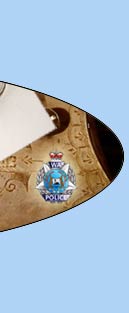 |
 |
 |
||
 |
||||
 |
 |
 |
||
 |
 |
 |
||
 |
||||
 |
 |
 |
||
|
|
|
A Colonial Law Man: Charles Symmons (1804-1887)
by Peter Conole
Charles Augustus John Symmons was a member of a well-connected and previously wealthy family of Welsh gentry. The main family line runs as follows: John Symmons of Llanstinan, High Sheriff of County Pembroke in the early 1700s, was the father of John Symmons (1701-1764), Member of Parliament for Cardigan. The latter was the father of a third John Symmons (1745-1831), barrister, scientist, bibliophile, art collector, founder member of the Royal Society and High Sheriff of County Carmarthen. This last John Symmons went bankrupt because of a wildly extravagant life style and ill-advised investments. He fled to Belgium and died in poverty there. His vast library and collection of paintings and ancient sculptures had already been dispersed. John the Third’s oldest surviving son, Charles Symmons, the subject of this sketch, obtained the patronage of Lord Clarendon (British Foreign Secretary in the 1830s). He arrived in WA in late 1839 with his wife Joanna (nee Elliot) and their family. Symmons had been appointed Protector of Natives in the colony and retained the post until the early 1850s. He and like-minded officials helped compile and publish (1842) the first WA aboriginal language dictionary. Apart from being a major lay benefactor of the Church of England in WA and a prominent colonial public official, Charles Symmons proved to be an important figure in local social and cultural life for decades. In his personal life, he was a convivial and good-hearted man. He was also a fine musician and served as the first Choirmaster of St Georges Church in Perth, in office from 1845-1853. However, he gravitated towards the law and became a man of great influence in the development of both law enforcement and judicial administration in Western Australia. Symmons held various other public positions, sometimes more than one at the same time: Member of the Board of Public Works; Assistant Police Magistrate in Perth, 1851; Immigration Agent from 1855; Acting Sheriff of Perth, 1856. Then came a brief period when he served as Chief of Police in WA with the rank of Acting Superintendent, March 1 to May 31, 1858. Even a brief tenure of this policing position held a lot of weight and it led to other things. Symmons obtained appointments in turn as Resident Magistrate at Geraldton, 1860-1862; Resident Magistrate and JP at Fremantle from 1862 and then Police Magistrate in the port town until retiring in the mid-1870s. He moved to Bunbury and died there in 1887. Charles Symmons was the nephew and namesake of a much-admired Anglican clergyman, poet and scholar, the Reverend Charles Symmons (1749-1826). He was also the brother-in-law of Sir Anthony Carlisle – physician, Gothic novelist, scientist, fellow of the Royal Society and Surgeon to King George IV. Such social connections must have stunned colonial society. Sadly, our Charles Symmons may have been the last in the male line of this branch of the family. The ‘Symmons Curse’ was consumption (tuberculosis), which killed off many members of the family, male or female, including both the wife and son of Charles and his brother and four cousins back in Britain. Peter Conole |
|
|